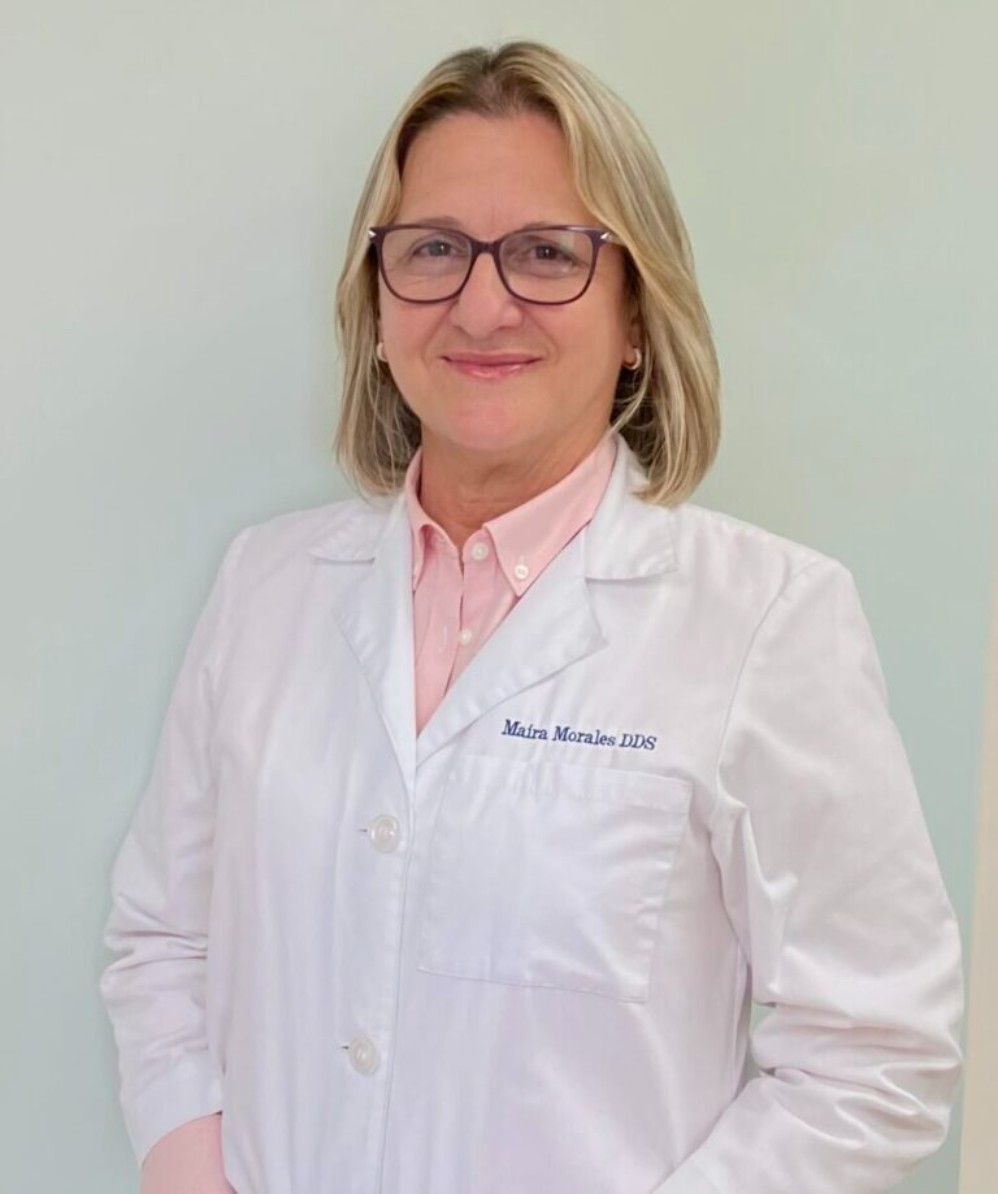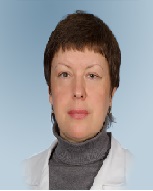Theme: Exploring Advanced Research in Ophthalmology and Vision Science
Ophthalmology-2023
4th World Congress on Ophthalmology and Vision Science will be organized during March 27-28, 2023 at Paris, France on the theme "Exploring Advanced Research in Ophthalmology and Vision Science".
Eye and Vision science is a therapeutic administrations calling stressed with the prosperity of the eyes and related structures, and moreover vision, visual systems, and vision information get ready in individuals. Basic research in Vision Science focuses on such educates as bioengineering, psychophysics, neurophysiology, visual neuroscience, nuclear and cell science, cell film normal science, biostatistics, apply independence, contact central focuses, spatial course, visual ailments, refractive headway, corneal surface mapping, infant vision, computational vision, and 3D PC illustrating.
The eye is an optical system comprising of a cornea and a lens. The crystalline lens of the eye changes its shape to focus light from objects over a great range of distances on the retina. The basic optic function of the eye is to form an image of whatever object being looked at on the retina. The focus length of this lens is adjustable by the muscles attached to it according to the distance of the object so that its image is always formed on the retina in normal situation.
Ophthalmology 2023 brings together a unique and international mix of large and medium pharmaceutical, biotech and diagnostic companies, leading universities and clinical research institutions making the conference a perfect platform to share the experiences, foster collaborations across the industries, associations and academia, and evaluate emerging technologies across the globe. Ophthalmology 2023 maximizes the opportunity to interact with and learn from your peers from across the country and across the globe it held with the discussions on Cornea and External Eye Disease, Retina and Retinal Disorders, Neuro Ophthalmology, Glaucoma: Visual Field Loss, Ocular Microbiology and Immunology, Novel Approaches to Ophthalmology therapeutics and many more.
Who can attend?
Clinical researchers & Scientists, Public Health Professional, Ophthalmic surgeons, Retina and Retinal Surgery, Glaucoma, Optometrists, Medical Practitioners, Professors, Deans, Students & Technicians, Medical & Health care Organizations & Associations, Optic and Radiations, Optical Power of the Eye, Optic Nerve Disease, Spectacle Lens, Contact Lens, Biophysics of vision, Stereopsis: 3D Vision, Researchers & Scholars, Idiopathic, Intracranial Hypertension, Ocular Migraine, Optometry.
Exceptional Benefits includes:
- CME accredited certification
- All accepted abstracts will be published in the conference souvenir & respective journals
- Each abstract will receive a DOI
- Certificate Accreditation by the International Organizing Committee (IOCM)
- All accepted abstracts will be published in the conference souvenir & respective journals
- Global Networking Opportunities
Why to attend?
Ophthalmology 2023 conference is a succession between Open access publications and worldwide international science conference events. It creates the platform to its participants to present their research works on amongst the world renowned Doctors, Scientists and Professors. It will be a brilliant stage for young researchers to explore, learn and collaborate. A Conference series LLC LTD scientific conferences its well organized scientific sessions, plenary lectures, poster presentations, world-class exhibitions, diverse symposiums, highly enriched workshops and B2B meetings.
Target audience:
- Clinical researchers & Scientists
- Public Health Professional
- Ophthalmic surgeons
- Retina and Retinal Surgery
- Glaucoma
- Optometrists
- Medical Practitioners, Professors, Deans, Students & Technicians
- Medical & Health care Organizations & Associations
- Researchers & Scholars
- Idiopathic Intracranial Hypertension – Ocular Migraine
- Diagnostic Instruments in Optometry
Track 1: Glaucoma
Glaucoma is an infection of the eye in which liquid weight inside the eye rises - if left untreated the patient may lose vision, and even get to be distinctly visually impaired. The illness for the most part influences both eyes, albeit one may have more serious signs and manifestations than the other. There is a little space in the front of the eye called the "foremost chamber". Clear fluid streams all through the front chamber, this liquid feeds and showers adjacent tissues. On the off chance that a patient has glaucoma, the liquid does not deplete appropriately - it empties too gradually - from the eye. This prompts to liquid develop, and weight inside the eye rises. Unless this weight is cut down and controlled, the optic nerve and different parts of the eye may get to be distinctly harmed, prompting to loss of vision. There are two primary sorts of glaucoma, open edge and shut point glaucoma. The liquid in the eye courses through a region between the iris and cornea, where it escapes by means of the trabecular meshwork - "edge" alludes to this zone. The trabecular meshwork is made of sponky tissue lined by trabeculocytes. Liquid channels into s set of tubes, known as Schlemm’s trench, from which they stream into the blood framework.
Track 2: Ophthalmology
Ophthalmology is a stream of medicine dealing with eye and visual system. Ophthalmology completely relates to both internal visual system and external parts such eye ball, eye lid, eye lashes and tear formation.Treatments include right from external eye care to using medical ,surgical and rehabilitate methods to treat various eye related problems. Many specialists such as Ophthalmologists, Optometrists, Vision Specialists working on various aspects to eradicate blindness. To have blind free world, it is very important for the clinicians and researchers to meet and discuss about the various aspects to bring research into clinical practice. Also certain diagnosis concerns can be dealt with finding novel solution through research. Ophthalmology conferences are being conducted to bring the researchers and clinicians together and have a beneficial discussion and make the world blind free.
Track 3: Perception and Visual Cognition
It depends on the procedure that incorporate psycho physics, eye growth, electropalatography, neuroimmunomodulation and additional ciphering modelling. Visual inquiry, spatial vision, perceptual association, semantic handling and classification, confront recognition, visual disregard, visual agnosia, perception for action, visual working memory, inhibition and psychological control, perusing, and social vision.
Track 4: Pediatric Ophthalmology
Pediatric ophthalmology is a branch of ophthalmology deals with visual impairment, and vision complications in kids. Pediatric ophthalmologists doctors work along the improvement of the visual system and the different issues that disturb visual advancement in kids. Pediatric ophthalmologists have proficiency in dealing with different visual infections that influence children.
Track 5: Infant Vision
Your children's vision advancement starts before birth. From the day your child born, her eyes will help her physical, mental, and enthusiastic advancement by enabling her to learn – a tad at to start with, and in the end substantially more – about her general surroundings. The visual arrangement of a baby sets aside some opportunity to create. In the primary seven day stretch of life, babies are unable to catch much detail. Their first perspective of the world is undefined and just in shades of dark.
Track 6: Scrutiny of Visual Sensory System
Despite advances in electroencephalogram imaging and other techniques, examination of the afferent visual sensory system is still the core of the neuro-ophthalmologic examination. A thorough refraction is an essential part of all clinical neuro ophthalmologic examinations. Conflict visual fields should be part of every afferent system examination. The relationship between the physical properties of light and perceptual and behavioural responses is known as visual psychophysics, which serves as the foundation for the clinical assessment of visual function. The resolution of patient’s optical field improves worsens, or remains stable over time is the most difficult aspect of visual field interpretation. Many attempts have been made to investigate visual field function using evoked potentials to visual stimuli.
Track 7: Visual-Neuroscience
Visual Neuroscience is a branch of neuroscience that focuses on the visual system of the human body, mainly located in the brain's visual cortex. The main goal of visual neuroscience is to understand how neural activity results in visual perception, as well as behaviours dependent on vision. In the past, visual neuroscience has focused primarily on how the brain (and in particular the Visual Cortex) responds to light rays projected from static images and onto the retina. While this provides a reasonable explanation for the visual perception of a static image, it does not provide an accurate explanation for how we perceive the world as it really is, an ever-changing, and ever-moving 3-D environment.
Track 8: Binocular Vision
Binocular vision is defined and the motor system and sensory system underlying binocular vision are summarised. A simple model of binocular vision is presented and terminology defined. The prevalence of binocular vision anomalies is reviewed, noting that primary eye care practitioners can expect to find binocular vision anomalies in at least one in five patients. The classification of binocular vision anomalies is described, noting that heterophoria can be classified according to the direction of deviation, fixation distance, and compensation. Strabismus can be classified according to constancy, direction of deviation, eye preference, and accommodative state.
Track 9: Ocular Oncology
Ocular oncology involves the study and treatment of tumors that occur in or around the eye. These tumors can range from harmless to potentially life-threatening, and may cause vision loss or loss of the eye itself. Due to the complex nature of ocular oncology, our faculty includes experts in cornea, ophthalmic plastic surgery, pathology, and retina. Mass. Eye and Ear researchers and clinician scientists have experience with a range of conditions, including ocular surface tumors, uveal melanoma, orbital tumors and inflammation, and retinoblastoma.
Track 10: Clinical Optometry
It characterizes the act of diagnosing and treating issue of the eye to enhance vision in a centre or comparative setting. Specialists of optometry utilize uncommon instruments to gauge abandons in vision and recommend contact focal points or eyeglasses to right insufficiencies. They may likewise perform minor surgeries to expel remote bodies from an eye and recommend activities to enhance the way eyes function. During a clinical optometry examination, the specialist measures the patient's capacity to see objects at different separations, alongside the capacity to see shading and light. An optometrist likewise searches for harm or infection that may be connected to declining vision. He or she normally measures weight in the eye to identify glaucoma, a typical issue as individual’s age, where an excess of liquid develops in the eye. On the off chance that left untreated, glaucoma could bring about blindness. Clinical optometry incorporates perception for waterfalls, a condition set apart by blurred focal points. Waterfalls may bring about vision misfortune and is additionally identified with maturing. On the off chance that this issue is found, the optometrist usually eludes patients to an ophthalmologist for surgery to evacuate waterfalls. An optometrist additionally eludes patients to therapeutic specialists and experts for different sicknesses or wounds that influence vision. Amid a clinical optometry examination, the specialist measures the patient's fringe vision and takes a gander at the state of the retina. He or she may analyse astigmatism brought about by ebb and flow of the retina and recommend remedial focal points to enhance visual perception. On the off chance that the patient favours contact focal points, the specialist normally advises the patient on their utilization to avoid contamination.
Track 11: Ophthalmic Anaesthesia
Ophthalmic surgery has been performed under an extensive variety of soporific methods. The sort of anaesthesia for each ophthalmic surgery relies on upon countless like patient co-operations, the nature of the surgery and specialist's inclination. Throughout the years, visual anaesthesia has advanced massively, with topical anaesthesia (which was first utilized as a part of 1884) making a rebound over the most recent couple of years. In this article we will survey the different sorts of anaesthesia utilized amid ophthalmic surgeries, their systems and their conceivable inconveniences.
Track 12: Clinical and Surgical Techniques
Clinical and surgical techniques are involved in visual pathologies, optic nerve damage, retinal damage, Eye diseases, physiology and pathology of vision, visual neuroscience, corneal disorders, neuro ophthalmology, intraocular pressure, vision loss, ocular diseases, eye cancer, cataract, night blindness, conjunctiva, diabetic retinopathy, visual disabilities, optic nerve, presbyopia, fungal endophthalmitis, glaucoma, phakomatoses, pupil, retina, sclera, vitreous hemorrhage, eye care, vitamin A deficiency.
A specialist eye specialist is in charge of choosing the proper surgical methodology for the patient, and for taking the essential wellbeing safety measures. Notices of eye surgery can be found in a few antiquated content. Today it keeps on being a generally rehearsed sort of surgery, having created different procedures for treating eye issues :
- Glaucoma surgery
- Cataract surgery
- Canaloplasty
- Laser ophthalmology surgery
Track 13: Optometry and Vision Science
Ophthalmology has a most important role in optometry and vision science provides eye care to consumers. Optometry and Research dedicated to the experts of Optometry and Vision Science of children. Pediatric optometric care performs the investigation such as comprehensive eye exams, binocular vision exams, low vision exams, dry eye and contact lens.
Vision Science is the study of the sensory processes that underlie vision, and the development and use of vision-related technologies.
Track 14: Refractive Surgery
Refractive surgery is a strategy for revising or enhancing vision. There is different surgical methodology for revising or altering eye's centring capacity by reshaping the cornea, or clear, round vault at the front of your eye. Different systems include embedding a focal point inside the eye. The most broadly performed kind of refractive surgery is LASIK, where a laser is utilized to reshape the cornea. For individuals who are myopic, certain refractive surgery strategies will decrease the ebb and flow of a cornea that is excessively steep so that the eye's centring force is reduced. Pictures that are engaged before the retina, because of a more drawn out eye or soak corneal bend, are pushed nearer to or specifically onto the retina taking after surgery. Farsighted individuals will have refractive surgery methods that accomplish a more extreme cornea to expand the eye's centring power. Pictures that are engaged past the retina, because of a short eye or level cornea, will be pulled nearer to or specifically onto the retina after surgery. Astigmatism can be rectified with refractive surgery strategies that specifically reshape segments of an unpredictable cornea to make it smooth and symmetrical. The outcome is that pictures concentrate plainly on the retina as opposed to being contorted because of light dissipating through a sporadically formed cornea.
Track 15: Common Eye Disorders and Their Diagnosis
The human eye is an organ that responds to light and has a few purposes. A sense organ, the mammalian eye permits vision. Pole and cone cells in the retina permit cognizant light observation and vision including shading separation and the view of profundity. The human eye can recognize around 10 million hues and is conceivably fit for distinguishing a solitary photon. Because of its differing qualities there are expansive number of disarranges and maladies and their conclusion identified with it , some among them are Retinitis Pigmentosa, Retinal Detachment, Amblyopia, Acute Red Eye, Graves' Disease, Optic Neuropathy, Strabismus, CMV Retinitis, Pterygium, Scleritis, Subconjunctival Hemorrhage.
Track 16: Keratoconjunctivitis Sicca
It is a condition in which a man doesn't have enough quality tears to grease up and feed the eye. Tears are fundamental for keeping up the soundness of the front surface of the eye and for giving clear vision. Dry eye is a typical and regularly ceaseless issue, especially in more seasoned adults. With every squint of the eyelids, tears spread over the front surface of the eye, known as the cornea. Tears give oil, lessen the danger of eye contamination, wash away outside matter in the eye, and keep the surface of the eyes smooth and clear. Abundance tears in the eyes stream into little seepage pipes in the inward corners of the eyelids, which deplete into the back of the nose. Dry eyes can happen when tear generation and waste is not in adjusted.
Track 17: Ophthalmology Syndromes
Ophthalmology syndromes are common among people of all ages ranging from children to old. Eye diseases can be impairment or abnormal functioning of eye which leads to visual disturbance. Most of the eye diseases cause blurred vision whereas severe cases lead to blindness.
Major eye problems or diseases are refractive errors, cataracts, glaucoma, retinal disorders, macular degeneration, diabetic eye problems, conjunctivitis etc. Some of the major eye problems will cause permanent loss of vision.
Track 18: Cognitive Vision
Vision science is the logical investigation of vision. Vision science includes all investigations of vision, for example, how human and non-human living beings handle visual data, how cognizant visual discernment works in people, how to abuse visual observation for successful correspondence, and how counterfeit frameworks can do similar assignments. Vision science covers with or envelops teaches, for example, ophthalmology and optometry, neuroscience(s), brain science (especially sensation and observation brain science, intellectual brain science, biopsychology, psychophysics, and neuropsychology), material science (especially optics), ethology, and software engineering (especially PC vision, computerized reasoning, and PC representation), and additionally other building related zones, for example, information perception, UI plan, and human variables and ergonomics.
Track 19: Retinal Disorders
The eye is one of the most important organs in the body and the retina receives information about everything you see such as colours, shapes and movements. Thousands of times each day, the eyes move and focus on images near and far, providing detailed 3-Dimensional pictures of the world around us. The eyes help accumulate a lifetime of memories in a visual form, making it a gift that is unlike any other. Retina disorders can affect the way that you process visual information and lead to distorted or absent vision.
Track 20: Neuro science Behind Vision
It is a branch of neuroscience that spotlights on the visual arrangement of the human body, essentially situated in the mind's visual cortex. The principle objective of visual neuroscience is to see how neural movement brings about visual observation, and in addition practices subject to vision. Previously, visual neuroscience has concentrated principally on how the cerebrum reacts to light beams anticipated from static pictures and onto the retina. While this gives a sensible clarification to the visual impression of a static picture, it doesn't give a precise clarification to how we see the world as it truly may be, a constantly changing, and steadily moving 3-D environment.
Global market research of ophthalmology
Ophthalmology is expected to reach $$71.9 billion by 2025 from $11.81 Billion in 2021 at a CAGR of 4.8 %. Ophthalmology is a field that deals with the medical treatment of Vision, children, and adolescents. Region/country wise Ophthalmology market report is available at Ophthalmology 2023
The global ophthalmology market witnessed a dip during the economic downturn in 2008 and 2009; however, it is poised to grow at a stable rate mainly due to an increasing aging population, large pool of patients with eye diseases, changing demographics and geographical trends, and increased focus on combination therapies of drugs. Moreover, incidences of glaucoma and cataract are increasing every year.
Cataract is responsible for 48% of the population becoming totally blind. In addition, more than 60 million people suffer from glaucoma and this number is expected to reach 80 million by 2020. An increasing aging population is also resulting in more people suffering from refractive errors. It is estimated that in the U.S. and Europe, refractive errors affect more than 30% of the population aged 40 or older. However, the economic slowdown and drying pipeline of ophthalmology drugs is restricting the market.
Scope of the Report
The research report categorizes the global ophthalmology drugs and devices market into diagnostic devices, surgical devices, vision care and drugs. All these markets are broken down into segments and sub-segments, providing exhaustive value analysis for 2010, 2011 and 2012, as well as forecast up to 2017. Each of the devices market is comprehensively analysed at a granular level by geography (North America, Europe, Asia, and Rest of the World) to provide in-depth information on the global scenario. However, the drugs market is analysed in the U.S., Europe, Japan, Asia, and Rest of the world.
According to WHO:
- 285 million people are estimated to be visually impaired worldwide: 39 million are blind and 246 have low vision.
- About 90% of the world’s visually impaired live in low-income settings.
- 82% of people living with blindness are aged 50 and above.
- Globally, uncorrected refractive errors are the main cause of moderate and severe visual impairment; cataracts remain the leading cause of blindness in middle- and low-income countries.
- The number of people visually impaired from infectious diseases has reduced in the last 20 years according to global estimates work.
- 80% of all visual impairment can be prevented or cured.
- Cataract removal is the most commonly performed ophthalmic surgical operation
- Ophthalmic Drugs & Devices – Market Analysis
The Global Ophthalmic Device Market is poised to grow at a CAGR of around 4.8% over the next decade to reach approximately $71.9 billion by 2025. According to a new market report published by Transparency Market Research "Ophthalmology Diagnostics and Surgical Devices Market (Optical Coherence Tomography, Echography, Corneal Topographers, Specular Microscopes, Cataract, Refractive, Glaucoma and Vitreous retinal Surgery Devices)- Global Industry Analysis, Size, Share, Growth, Trends and Forecast, 2013 - 2019," the global Ophthalmology Devices market was valued at USD26,012.6million in 2012 and estimated to reach a market worth USD40,381.6 million in 2019 at a CAGR of 6.6 % from 2013 to 2019. Asia Pacific ophthalmic drugs & devices market was valued at $11815.02 million in 2016 and is expected to reach $20920.43 million by 2025 growing at a CAGR of 6.64% during the forecast period of 2017-2025.
CONFERENCE SERIES are corporate members of the following organizations
- Royal Society of Biology
- IBMS
- British Society for Immunology
- Rare Care UK
- Opportunities for Conference Attendees
For Researchers &Faculty:
- Speaker Presentations
- Poster Display
- Symposium hosting
- Workshop organizing
- For Universities, Associations & Societies:
- Association Partnering
- Collaboration proposals
- Academic Partnering
For Business Delegates:
- Speaker Presentations
- Symposium hosting
- Book Launch event
- Networking opportunities
- Audience participation
For Companies:
- Group Participations.
- Workshop organizing
- Scientific Partnering
- Product launch
- Marketing and Networking with clients
- Sponsorships opportunities
Related assosication
Major hospitals associated with ophthalmology around the world are
- Johns Hopkins School of Medicine
- Bascom Palmer Eye Institute
- Wills Eye Hospital
- UCSF School of Medicine
- David Geffen School of Medicine
- Mayo Medical School
- LV Prasad Eye Institute
Major hospitals associated with ophthalmology London are
- Osaka University Hospital
- Miyata Eye Hospital
- Shinjuku-Higashiguchi Eye Clinic
- Kobe Kanagawa Eye Clinic
- Yotsuya-Shirato-Eye Clinic
- Gunma University Hospital
- Chiba University Hospital
- St.Marianna University School of Medicine Hospital
- Tohoku Rosai Hospital
Major societies associated with ophthalmology are
- American Academy of Ophthalmology (AAO)
- American Association for Paediatric Ophthalmology
- Association for Research in Vision and Ophthalmology(ARVO)
- European Society of Retina Specialists (EURETINA)
- Asia Pacific Glaucoma Society
- European Society of Cataract & Refractive Surgeons (ESCRS)
Major Vision Science Associations are
- Association for Research in Vision and Ophthalmology (ARVO)
- Vision Sciences Society (VSS)
- Human Vision and Electronic Imaging (HVEI)
- Image Perception in Medical Imaging
- Eye Tracking Research & Applications (ETRA)
- Scottish Vision Group and Applied Vision Association (AVA)
- European Conference on Visual Perception (ECVP)
Conference Highlights
- Glaucoma
- Ophthalmology
- Perception and Visual Cognition
- Pediatric Ophthalmology
- Infant Vision
- Scrutiny of Visual Sensory System
- Visual-Neuroscience
- Binocular Vision
- Ocular Oncology
- Clinical Optometry
- Ophthalmic Anaesthesia
- Clinical and Surgical techniques
- Optometry and Vision Science
- Refractive Surgery
- Common Eye Disorders and Their Diagnosis
- Keratoconjunctivitis Sicca
- Ophthalmology Syndromes
- Cognitive Vision
- Retinal Disorders
- Neuro science behind Vision
To share your views and research, please click here to register for the Conference.
To Collaborate Scientific Professionals around the World
| Conference Date | March 27-28, 2023 | ||
| Sponsors & Exhibitors |
|
||
| Speaker Opportunity Closed | Day 1 | Day 2 | |
| Poster Opportunity Closed | Click Here to View | ||
Useful Links
Special Issues
All accepted abstracts will be published in respective Our International Journals.
- Journal of Clinical and Experimental Ophthalmology
- Journal of Eye & Cataract Surgery
- International Journal of Ophthalmic Pathology
Abstracts will be provided with Digital Object Identifier by





















